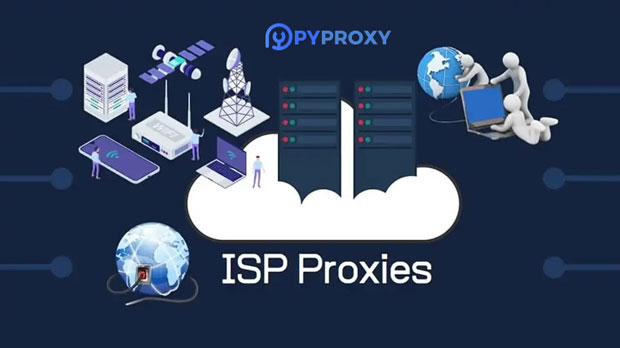When it comes to online privacy and security, socks5 proxies have become a popular choice. These proxies can route internet traffic without altering or modifying the data, making them a preferred option for users who want fast, secure, and anonymous browsing. Among various types of proxies, high-speed SOCKS5 proxies are especially sought after for activities such as streaming, gaming, or accessing geo-restricted content. However, when offered for free, many users question their reliability. Are free high-speed SOCKS5 proxies truly trustworthy? This article delves deep into the pros and cons of using such proxies, assessing their performance, security, and potential risks, while providing a clear understanding of whether they can be relied upon for secure online activities. Understanding SOCKS5 ProxiesBefore diving into the reliability of free high-speed SOCKS5 proxies, it's essential to first understand what SOCKS5 proxies are and how they work. SOCKS5 is the latest version of the SOCKS (Socket Secure) protocol, which functions as an intermediary between a client (like your computer or mobile device) and the internet. SOCKS5 allows for a wide variety of internet traffic to pass through, including TCP and UDP packets, making it suitable for activities like web browsing, streaming, or even peer-to-peer file sharing.Unlike traditional proxies, SOCKS5 does not modify the data or change the headers of the packets it forwards, making it a "transparent" proxy that is less likely to cause issues with services or websites. Its versatility is one reason it is commonly used in various online activities where privacy and speed are essential.The Advantages of High-Speed SOCKS5 ProxiesHigh-speed SOCKS5 proxies are typically preferred for activities where speed is crucial, such as streaming high-definition content or engaging in online gaming. There are several benefits to using these proxies:1. Improved Privacy and Anonymity: Since SOCKS5 proxies don't alter the data being transmitted, they provide a higher level of privacy. They effectively hide the user's IP address and can help bypass geographical restrictions or censorship. 2. Better Performance for Streaming and Gaming: With the capability to handle both TCP and UDP protocols, SOCKS5 proxies are often faster than HTTP or HTTPS proxies. This makes them an ideal choice for streaming high-quality content or for gaming, where low latency and high-speed connections are vital.3. Flexibility: SOCKS5 proxies are more flexible than other types of proxies because they don't interfere with the content being transferred. They can support a wide range of activities without compromising the integrity of the data or the service being accessed.Risks and Drawbacks of Free High-Speed SOCKS5 ProxiesDespite the clear advantages, there are several risks and drawbacks associated with using free high-speed SOCKS5 proxies. While they may seem appealing for users who want to avoid spending money, free proxies often come with several limitations:1. Security Concerns: Free SOCKS5 proxies often lack strong encryption or other security measures, making them vulnerable to hacking and other types of cyber attacks. They could potentially expose your data, including sensitive information such as passwords or credit card details, to malicious third parties.2. Instability and Downtime: Free proxies are often hosted on unreliable servers with limited resources. This can lead to frequent connection drops, slow speeds, and periods of downtime, which makes them unsuitable for high-demand activities like streaming or gaming.3. Limited Bandwidth and Speed: Free SOCKS5 proxies may provide slower speeds compared to their paid counterparts. With limited bandwidth allocated to free users, they often suffer from congestion, resulting in slower connection speeds and buffering, especially during peak usage times.4. Data Logging and Privacy Violations: Many free proxies log users' data, including browsing history and personal information, to monetize their service or sell the data to third-party advertisers. This negates the primary purpose of using a proxy—privacy. Without proper encryption and no-log policies, free proxies can compromise your anonymity and expose you to potential surveillance.5. Malware and Adware Risks: Free proxies might serve as a vector for distributing malware, adware, or other malicious software. This is particularly true if the proxy provider is not reputable or doesn't have proper security measures in place. Users who rely on free proxies risk installing harmful software without realizing it.Can Free High-Speed SOCKS5 Proxies Be Trusted?Given the above risks, the question arises: can free high-speed SOCKS5 proxies be trusted? The answer largely depends on the user's specific needs and how much they value security, privacy, and reliability.1. For Casual Use: If your usage is light and you don't need the proxy for highly sensitive tasks, a free socks5 proxy may suffice. For example, if you're simply accessing geo-restricted content or trying to hide your IP address for basic browsing, a free proxy might offer a decent level of privacy without significant drawbacks. However, even for casual use, it's essential to remember that free proxies often carry security risks, so you should be cautious about what activities you perform while using them.2. For Sensitive or High-Demand Activities: For users who require strong security, privacy, and stability—such as those engaging in online banking, shopping, or using the proxy for streaming or gaming—a free high-speed SOCKS5 proxy is generally not a reliable choice. Paid proxies tend to offer better security, faster speeds, more stable connections, and more robust privacy protections. In these cases, opting for a paid solution may be a wise investment to ensure a safer and more reliable experience.How to Minimize Risks When Using Free SOCKS5 ProxiesIf you still decide to use a free high-speed SOCKS5 proxy, there are several measures you can take to minimize the associated risks:1. Use Encryption: Always use an additional layer of encryption, such as HTTPS or a VPN, to protect your data. This can help mitigate the risks of data leaks, even if the SOCKS5 proxy itself is not fully secure.2. Avoid Sensitive Activities: Do not use free proxies for activities that involve sensitive data, such as online banking, entering personal credentials, or making purchases. These activities should always be done through a trusted and secure connection.3. Monitor Your Connection: Regularly check your connection's performance and stability. If the proxy connection becomes too slow or unreliable, it may be worth switching to a more stable option or considering a paid service.4. Read Terms and Conditions: While it may seem tedious, always read the terms and conditions of a free proxy service. Look for any clauses related to data logging, tracking, or selling your data. This can give you a better understanding of how your information is being handled.Conclusion: Is It Worth Using Free High-Speed SOCKS5 Proxies?Free high-speed SOCKS5 proxies may seem like an appealing option for those seeking anonymity and faster speeds without the cost. However, they come with numerous risks, including poor security, unreliable performance, and the potential exposure of your personal data. While they can be suitable for casual browsing or low-stakes activities, they are not recommended for those who require a high level of security, privacy, and reliability. Ultimately, the decision to use a free proxy should be made carefully, with an understanding of the potential risks involved. For more demanding online activities, investing in a reputable paid SOCKS5 proxy service is likely a safer and more reliable choice.
Jan 09, 2025
![arrow]()



























































